Activity alternatives to walking your dog
We all know that daily exercise is important for your dog, as it provides the mental and physical stimulation, they need to burn off pent-up energy, keep them trim and stop them developing any of those pesky, boredom-induced behaviours such as chewing, clawing, whining and excessive barking.
Regular outdoor walks are generally considered the most preferable form of physical exercise for dogs, but it's not always possible to give them that brisk daily walk. Busy lives, niggling injuries (whether in you or your dog) and excessively warm or cold weather can make it difficult or inadvisable to go out for that dog walk. However, skipping a day here and there doesn't make you an irresponsible dog owner, especially if you swap out that walk for one or two of these fun alternatives.
1. Seek out routes for shorter walks
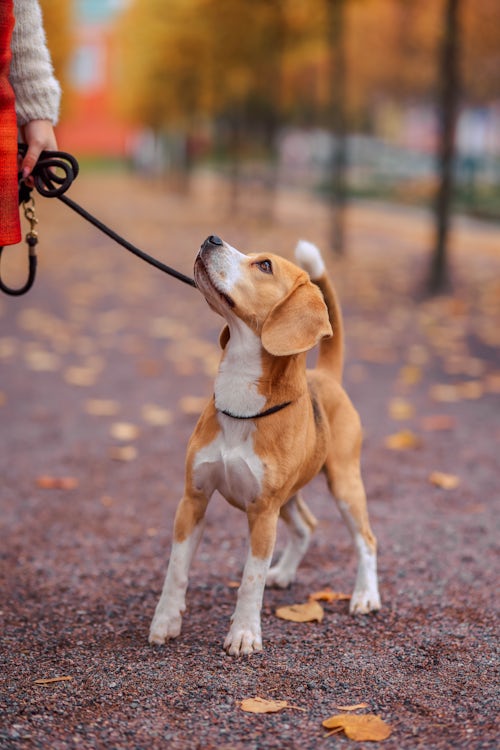
Ok, so sticklers among you will observe that this is not actually an alternative to walking, but bear with us... If you are used to taking your dog for long hikes and, for one reason or another, you find that it is not possible to do this, don't give up on the idea of a walk all together. A short walk will still provide your dog with mental and physical stimulation and, although it may not wear them out, they will be grateful for the bonding time, the opportunity to sniff a few new smells and the chance to go for a wee.
2. Play games in the garden
Dogs love getting out in the garden and exploring the outside world right on your doorstep. The games that they enjoy playing will largely be dictated by their individual personalities, but here are some ideas of garden games you could play with your dog to get them some basic exercise on days when a walk isn't possible:
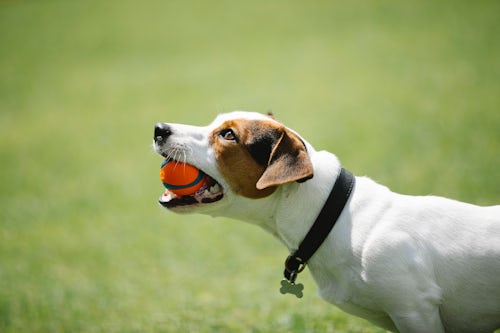
Fetch!
An old classic, but a tried-and-tested favourite for many dogs, playing a game of fetch is a simple alternative to a dog walk. To avoid injury, make sure the ball you choose is an appropriate size for your breed of dog (tennis balls can be choking hazards for larger breeds). Stop playing with any toys that are damaged and falling apart, as the small pieces could cause internal damage if swallowed. If you have a pup who is still growing, roll the ball along the floor to prevent them from damaging their growing limbs.
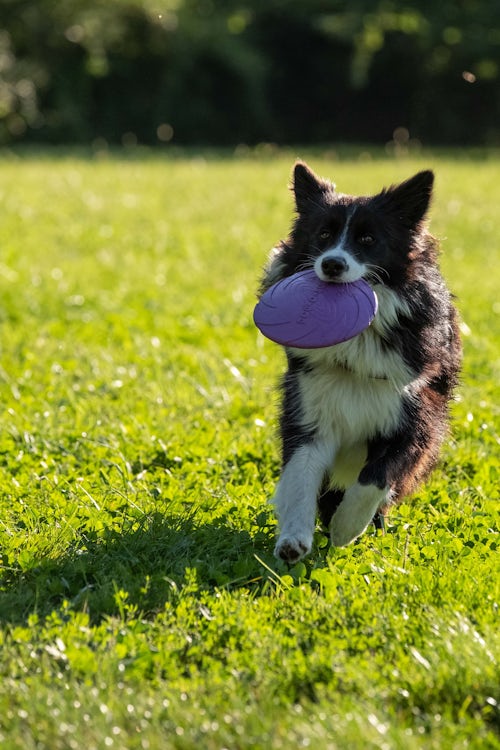
Play frisbee catch!
If you have a big enough garden and a high-energy dog, playing frisbee is a really good way to help your dog burn off some of his boundless energy and develop his concentration and agility skills. If your dog is new to playing with a frisbee, start by building their interest in it, rolling it towards them and experimenting with short throws to find out if he has any desire to chase and catch it. Once you have piqued their interest, you can build up to larger throws and encourage them to catch the frisbee in their mouth.
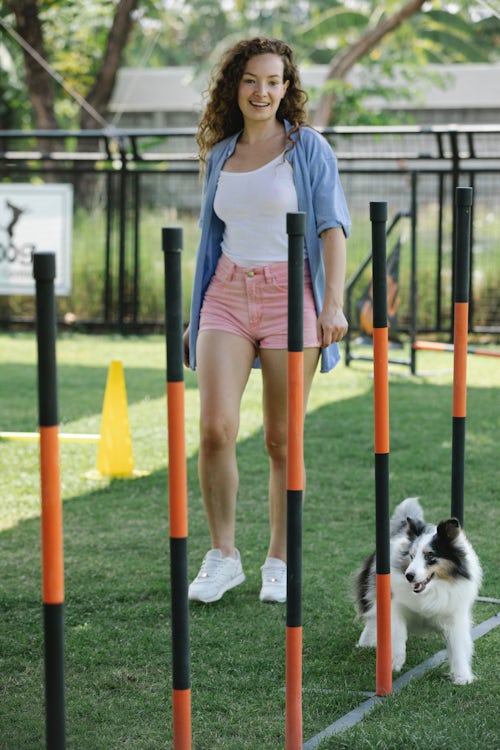
Set up a dog agility course
You don't need to spend a fortune in pet stores on a specialist dog agility kit for your garden. There are probably lots of household items already in your possession that could be repurposed as garden obstacles for your very own agility training course. PVC pipes can be used as hurdles, children's hula hoops make good jumping rings, and any sturdy pieces of plywood can be made into seesaws, ramps and platforms.
A series of tunnels to crawl through, jumps to leap over and things to clamber over or under will exercise your dog's brain as much as their muscles. Helping them to get the hang of the course will be a great bonding activity and, finally, mastering the whole course will give you both an incredible sense of achievement.
Read more tips about getting started in agility and helping your dog to master an agility course here
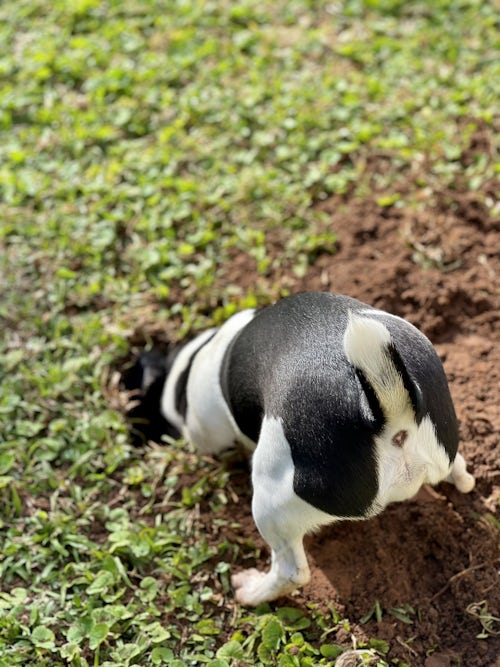
Create a designated digging area
Many dogs have a cheeky tendency to try and bury their treats and toys. Others dig just for the sheer joy of it and sometimes they do it in your mother-in-law's freshly planted rose garden because the newly turned earth simply cannot be resisted. Digging is a natural and instinctive habit for many dogs, and they often find it so enjoyable that training them out of it can be really tricky.
One way of managing this behaviour, and providing an alternative source of exercise to walking, is to create a sand-filled digging pit. You can bury treats, toys or bones just under the surface and encourage your dog to dig them up. We can't promise that it will guarantee the safety of your relatives' flower beds, but it's worth a try!
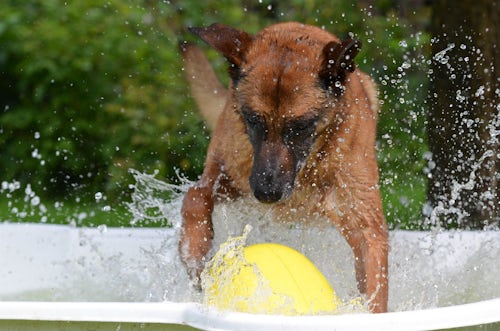
Water play
The same large plastic containers that can be filled with sand for a doggy sandpit in your garden could equally be filled with water for a dog's splash pool. This is a particularly good idea if hot weather is what's preventing your regular walk, as it will help to cool them down as well as get a bit of exercise. If your dog really, really loves water, you can ramp up the fun by adding hose play to your water-based activities.
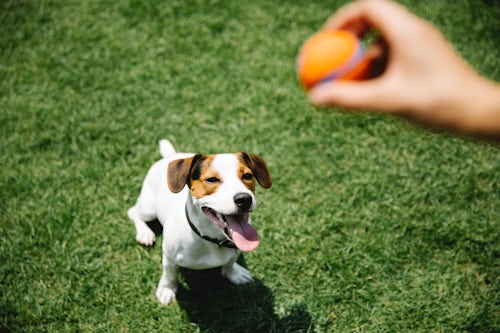
Play Round Robin - Fun for all the family!
Enlist the whole family in your dog's daily exercise routine by getting everyone to stand in a circle, at least 5 metres from each other, and take it in turns to call the dog to them. If you train your dog up in this game with healthy treats and rewards for coming when they are called, they will soon do it for praise alone.
Playing Round Robin is a great way to get everyone in the family interacting with their pet and it helps to train the dog to respond to commands from everyone (and not just pick a favourite family member and ignore everyone else).

Run or walk laps of the garden
Another way to exercise your dog is by doing laps of your garden. If they aren't the type of dog to motivate themselves to trot around, exploring the garden, sniffing out new smells and examining anything new that might be there, then you can pop them on the lead and encourage them to walk or run round the garden with you. It’s not ideal, but if you can’t get out it does provide your dog with a valuable bit of exercise to help stave off the boredom of being cooped up inside. It also benefits their mental health and gives them the opportunity for a toilet break.
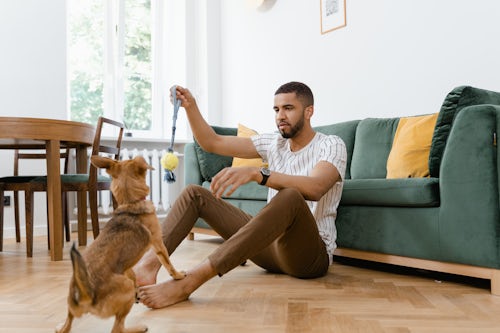
Indoor activities
Indoor play is generally a better option for a small dog playing a game of fetch or tug of war with a single adult, as you would be surprised how much chaos can ensue when you play indoor games with a big dog and small children are involved (you thought that picture high up on the mantlepiece is safe - it is not).
A terrier who loves chasing a ball across a room or down a hall and bringing it back to you will often play until your arm aches and only give up when you do. That adds up to quite a bit of valuable exercise for them when walks are off the cards.

Training sessions
If injury or extremely cold or hot weather are keeping you from your walks, you could use the periods of time you would usually be walking together to do short bursts of obedience training each day. During these sessions you can focus on new training commands, reinforcing old commands and ironing out any canine bad habits your dog may have developed. Training sessions not only help to reinforce good behaviour and keep activity levels up, they also exercise your dog's brain and allow you to spend quality time together.
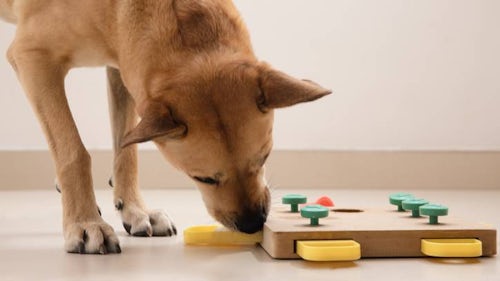
Use a food puzzle toy
Make eating a fun, interactive pastime rather than just a source of nutrition by using a food puzzle toy. These are available online and at most large pet stores and can be loaded with kibble and given to your dog at meal times. By asking them to “hunt” for their breakfast or dinner in this way, you are providing them with mental stimulation and reducing the likelihood of over-eating, which can lead to a number of doggy health problems.
.jpg?ixlib=gatsbyFP&auto=compress%2Cformat&fit=max&q=55&w=500&h=750)
Play hide and seek
Dogs have an amazing sense of smell, so why not hide some treats round the house and encourage your dog to find them? If you have kids to entertain as well, you could have a go at getting them to hide and asking your dog to find them too.
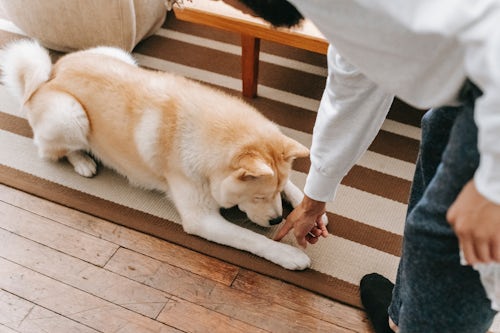
Teach your dog a new obedience trick
Ever wanted a dog that played dead, gave you a high five or could bring you the newspaper? You could use the time when you aren't walking to teach them fun obedience tricks that will go down a storm when you share video footage on your social media channels. We particularly like the basket trick, where you teach your dog to drop their toys into a basket. Work on it long enough and they will be putting all the family's dirty clothes in the laundry basket and saving you a job!
Most importantly, don't stress
Whether or not you manage to fit in a few of these alternative forms of dog exercise on the days when you can't go for a walk, remember that you are not failing as a pet owner if you miss a walk or two. In the same way, we should not get to upset if we miss a workout at the gym or a post-work run if we generally include these things in our lifestyles. Judge yourself by the patterns you have established and not by the few occasions when you couldn't do everything you had planned. Step back, look at the bigger picture and remind yourself that if your dog is healthy, happy and getting the attention and exercise they need on a regular basis, you're doing something right.

.png?ixlib=gatsbyFP&auto=compress%2Cformat&fit=max&w=70&h=70)